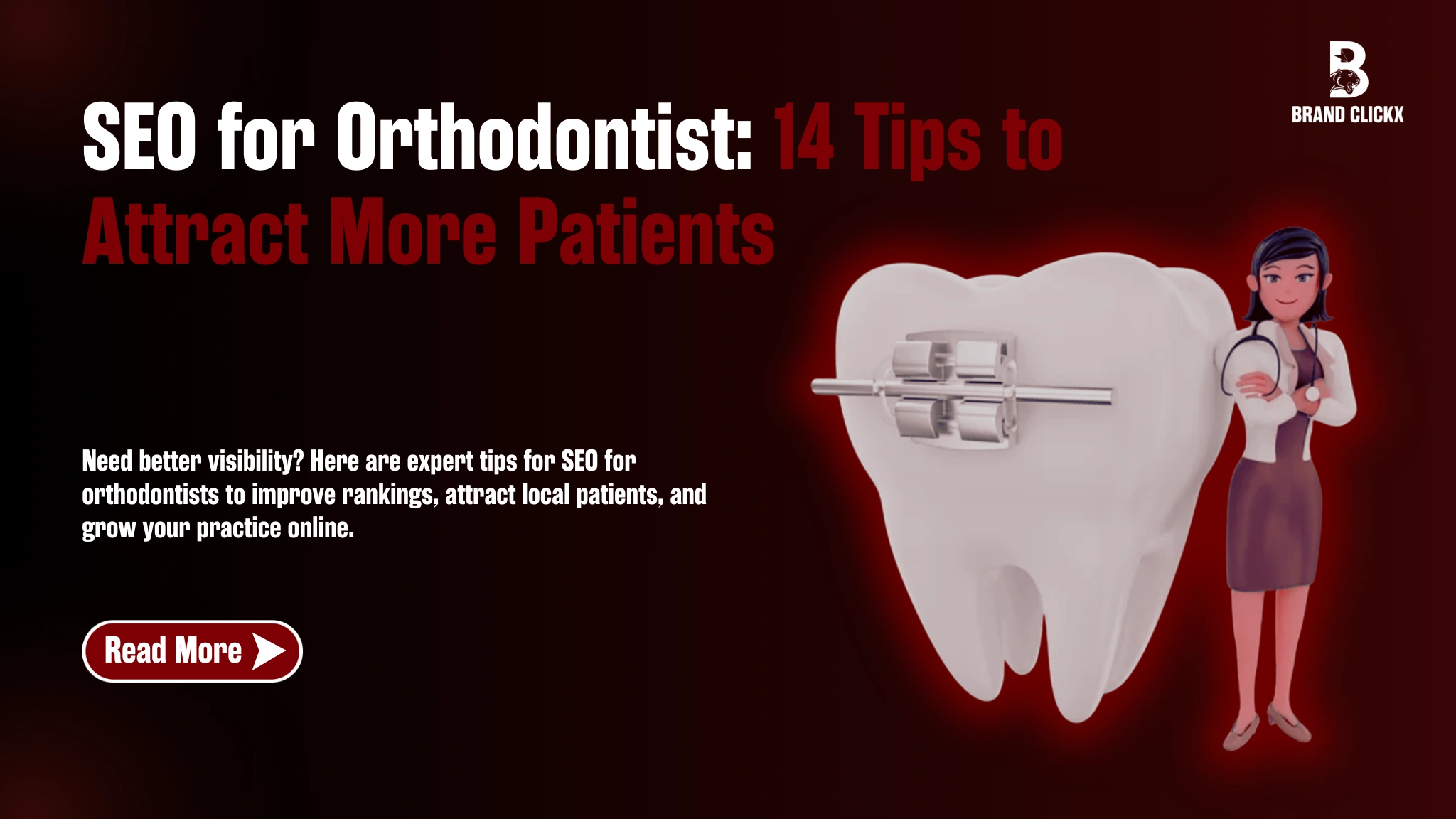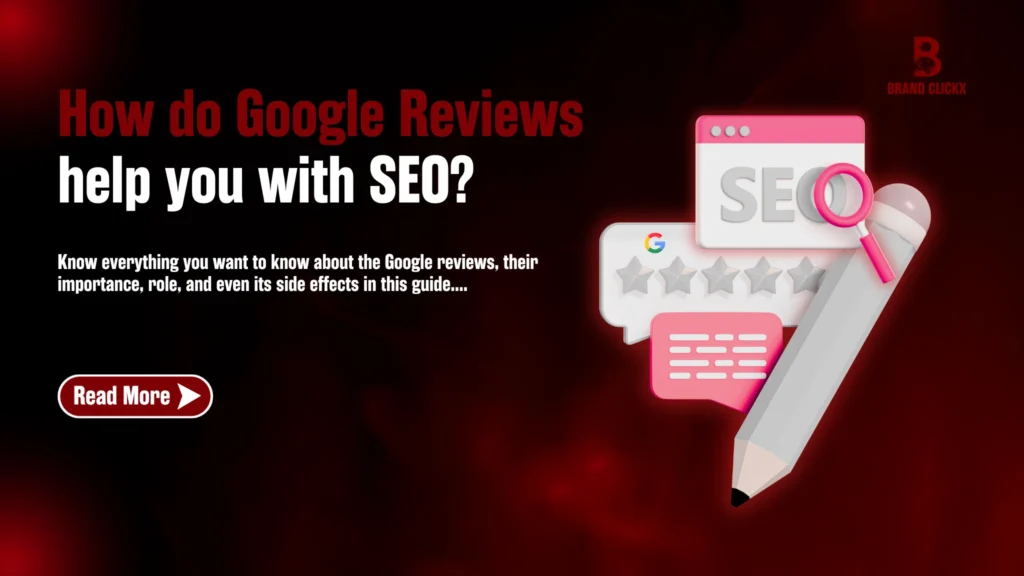Every day, you help people smile brighter and feel more confident. You put in the work, perfect every detail, and genuinely care about your patients. But when someone nearby searches for an orthodontist, your practice is buried under a list of others. Feels unfair, right?
But the truth is being great at what you do isn’t enough if people can’t find you. That’s the gap a smart SEO strategy can fill. With the right approach, your practice won’t just exist. It’ll stand out, making it easy for potential patients to find and trust you.
Whether you specialise in Invisalign, traditional braces, or other treatments, a well-optimised online presence means the right people will find your services when they need them most.
In this guide, we’ll share proven strategies to help you rank higher, attract more patients and grow your practice online.

SEO for Orthodontist: 14 Proven Tips
You’re putting in a lot of work, building a fancy website, posting on social media, and running ads but if you’re not doing the right things the results can be disappointing.
SEO for orthodontists isn’t just about having a website; it’s about making sure the right people (potential patients) find you when they need you.
So, let’s take a look at some powerful SEO strategies to help your orthodontic practice rank higher, attract more patients and grow.
1. Get Your NAP Right (and Keep It That Way!)
Your Name, Address and Phone Number (NAP) need to be the same everywhere on Google, your website and every other listing. Even a small difference, like writing “Ste 101” in one place and “Suite 101” in another, can confuse Google and drop you down in search results.
Many orthodontists update their details on their website but forget about their old listings on directories like Yelp, Healthgrades or WebMD. If your contact info is inconsistent, Google won’t know which one to trust, and that means fewer people finding your practice.
2. Make Your Profile Stand Out Visually
Let’s suppose a potential patient lands on your Google business profile. Official website or social media, and all they see is one dull photo of your clinic’s entrance. Will that convince them to book an appointment? Probably not.
People want to see where they’re going, who they’ll be treated by, and what kind of results they can expect. For Google Business Profile, trust comes from real images—patients want to see actual photos, not stock images.
So you really need to upload high-quality images of your clinic’s welcoming space, friendly staff, and, most importantly, real before-and-after transformations. A straight, beautiful smile in a photo does more than any marketing message ever could.
Check out Dr Luba Richter’s official website. This website features a bright and energetic design with fun colours and engaging visuals, creating a lively and inviting atmosphere.

3. Always Ask Happy Patients to Leave a Review
Do you know what’s more convincing than a fancy ad? A real patient saying, “This orthodontist changed my life!” Reviews aren’t just about boosting your ranking.
They build trust before a patient even steps into your office—and they help with SEO too. The more positive reviews you have, the more Google sees your practice as trustworthy, pushing you higher in search results.
But here’s where most orthodontists go wrong. They assume happy patients will leave a review on their own. They won’t unless you ask. So, what is the right time to ask them to leave the review?
Right after their braces come off, they’re already thrilled with their new smile, so a simple request like “We’d love to hear about your experience!” is all it takes. Make it easy by sending them a direct link to your review page.
For instance, a shiny heartfelt review, like the one left for Dr Coleman below, doesn’t just look good; they builds real trust and credibility. When potential patients see genuine praise from happy smiles, they feel more confident choosing your practice.

And don’t just collect reviews. Respond to them. A short, thoughtful reply like “It was a pleasure being part of your smile journey! Enjoy your new grin!” makes a patient feel valued and encourages more engagement.
4. Keep Your Profile Active
Many orthodontists treat their GBP like a business card. Set it up once and leave it alone. But Google prioritizes active listings, so if you’re not posting updates, you’re missing out.
- Keep it fresh by sharing:
- Special offers (Discounts on Invisalign, free consultations)
- Quick tips (How to clean aligners, what foods to avoid with braces)
- Behind-the-scenes moments (New technology in your clinic, fun team photos)
A well-maintained profile isn’t just about rankings. It keeps your practice at the top of people’s minds. And when someone finally decides it’s time for braces or Invisalign, guess who they’ll call?
5. Target Local Search Terms That Matter
Many orthodontists fill their site with generic terms like:
- “top-quality orthodontic care”
- “experienced specialists.”
But these don’t match what potential patients actually search for. Also, most people searching for an orthodontist aren’t just looking for information. They’re looking for someone nearby who can fix their teeth.
That’s why local search terms are crucial. Instead of broad keywords like “orthodontist” or “braces,” target location-based searches such as:
- “Best orthodontist in [your city]”
- “Affordable braces near me”
- “Invisalign specialist in [your area]”
These keywords tell Google that you’re relevant to people searching in your location. This increases your chances of showing up in local search results and Google’s map listings.
6. Use Long-Tail Keywords for Specific Queries
Not everyone searching for orthodontic treatment is ready to book an appointment immediately. Many start by asking specific questions.
This is where long-tail keywords help. These are longer, more detailed phrases that match what potential patients want to know.
Some examples include:
- “How long does Invisalign take?”
- “Do braces hurt?”
- “Can I get Invisalign with missing teeth?”
By creating blog posts or FAQ pages that answer these exact questions, you attract patients earlier in their decision-making process. When they’re finally ready to choose an orthodontist, they’ll remember your name.
7. Optimize Every Page with the Right Keywords
Many orthodontists write great content but forget about on-page SEO. Google doesn’t just scan your website for general information. It looks at specific elements to decide how relevant your site is.
Make sure every page includes:
- Title tags: These are the clickable blue links in search results. Avoid generic ones like “Home | [Your Clinic Name].” Instead, use “Top Orthodontist in [City] | Braces & Invisalign.” This makes your listing more relevant and clickable.
- Meta descriptions: This is the short text under your title in search results. Keep it engaging. Add a call to action to encourage clicks. For example: “Looking for an expert orthodontist in [City]? We offer braces, Invisalign, and more. Book your consultation today!”

- Headers (H1, H2, H3 tags): Google scans these to understand your page’s content. Your H1 should be clear and specific. Avoid vague phrases like “Welcome to Our Practice.” Instead, use “Expert Orthodontic Care in [City].” This improves rankings and attracts the right audience.
Read More: How to Rank a Service Area Business & Dominate Local Search
8. Content for Every Step of the Patient Journey
Not everyone visiting your website is at the same stage. Some are just researching, and others are ready to book an appointment. Make sure your content speaks to each type of visitor—and helps your SEO rankings at the same time.
When your site offers valuable content for every stage, visitors stay longer, engage more, and signal to Google that your website is a trusted resource, boosting your rankings.
- Awareness stage: Blog posts on general topics like “Is Your Child in Need of Braces.”
- Consideration stage: Comparison guides like “Braces vs. Invisalign: Which One Is Right for You?”
- Decision stage: Testimonials, case studies, and “What to Expect” pages that make patients feel comfortable booking an appointment.
9. Use Multiple Formats—Not Just Blog Posts
Not everyone loves reading long articles. Some prefer watching a video, checking out an infographic, or skimming a FAQ list. Mix it up to reach more people:
- Videos: Walk potential patients through the treatment process or show real before-and-after results.
- Infographics: Quick, shareable visuals explaining topics like “How Braces Move Teeth.”
- Patient Testimonials: Real-life transformations build trust and encourage new bookings.
When your content answers patient questions, builds trust and provides value, you don’t just get more visitors—you get patients who feel confident choosing you.
10. Use Internal Links to Keep Visitors Engaged
Most orthodontists put a lot of effort into bringing people to their websites but then leave them hanging. What happens? Visitors read one page, don’t know what to do next and leave. That’s where internal links can work wonders.
Let’s say someone is reading your blog about Invisalign vs. Braces. They’re interested, but what’s next? Instead of making them figure it out, guide them! A simple link like: “Still unsure which option is right for you? Check out our Invisalign treatment page for details!”
Makes a huge difference.
The idea isn’t to push visitors! It’s to help them naturally move from one useful page to the next. The longer they stay, the more likely they are to book an appointment.
11. Optimize for Featured Snippets
Ever searched for something on Google and seen a quick answer pop up at the top? That’s a featured snippet, and landing there can send a flood of traffic to your site.
How do you get one? Keep answers short, clear, and direct. Google loves structured information, so use bullet points or a simple paragraph.

12. Improve Website Speed & Mobile Experience
Here’s the hard truth: If your site is slow, people will leave fast. It doesn’t matter how great your services are; if your website takes forever to load, visitors will click away before they even see it.
Speed Up Your Website
No one has the patience for a website that drags. If your site loads in more than 3 seconds, potential patients are gone.
Here’s how to fix it:
- Compress images: Huge image files slow everything down. Resize them without losing quality. You can use Bulk Resize of Tiny PNG for this.

- Enable caching: This helps your site load faster for returning visitors.
- Pick a good hosting provider: Cheap, slow hosting can kill your speed. Go for one that’s reliable.
To check your site speed, just run it through Google PageSpeed Insights. If it’s slow, fix what’s needed.
13. Make Sure Your Website Works Perfectly on Mobile
Over 64.6% of people searching for an orthodontist are doing it on their phones. If your site looks weird or is hard to use on mobile, you’re losing patients before they even call you.
Here’s what to check:
- Mobile-Friendly Design – Your website should adjust automatically to any screen size.
- Big, Clickable Buttons – Tiny buttons = frustration. Make sure “Book Appointment” is easy to tap.
- Fast Load Time on Mobile – A slow mobile site is a dealbreaker.
Google actually ranks mobile-friendly websites higher, so fixing this isn’t just for patients—it’s for SEO too.

14. Make It Easy for Visitors to Take Action
A sleek website is great, but if people can’t figure out how to book an appointment, it’s pointless.
- Clear Calls to Action (CTAs): Every page should have a next step, like booking a consultation.
- Simple Navigation: Don’t make visitors hunt for info. Keep the menu clean and easy to use.
- One-Click Booking – If someone has to dig through pages just to schedule a visit, they’ll give up. Put a “Book Now” button at the top of every page.
A fast, mobile-friendly website isn’t just about rankings—it’s about getting actual patients through your door. Make their experience smooth, simple, and frustration-free, and they’ll stick around.
FAQs
1. Do dentists need SEO?
Yes, SEO helps dentists attract more local patients and grow their practice online.
2. What is local SEO for dentists?
Local SEO optimizes a dental clinic’s online presence to rank higher in local searches.
3. Is there a future in orthodontics?
Yes, increasing demand for orthodontic treatments ensures strong career growth.
4. What is local SEO for doctors?
It enhances a doctor’s visibility in local searches, bringing in more patients.
Also Read:
- How much does dental SEO cost? A comprehensive guide
- Smart Local SEO for Dentists: Strategies to Grow in 2025
Final Words
You need to be smart with your SEO strategy to get the most out of your online presence. Otherwise, potential patients might never realize how amazing you are for their smile transformation.
If the strategies above feel a bit overwhelming, there’s no problem in getting expert help—because professionals know how to make things work.
That’s where Brand ClickX can help. Trusted by many orthodontists, we know how to rank, convert, and grow your practice. Let’s get your name where it belongs—at the top! Ready to level up? Let’s connect today!



